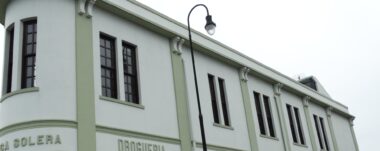How’s Costa Rica’s economy like?
Costa Rica’s economic structure is basically based on tourism, agriculture and the export of electronic equipment and services. The country significantly reduced poverty during the 1950s and 1980s thanks to a strong government push for productive processes for the domestic market, as well as the development of strong social investment in education, health, electricity, telecommunications, and water services, among others.16
The Costa Rican economy is the twelfth largest economy in Latin America in terms of nominal gross domestic product (GDP),17 (after Uruguay and before Panama) and the twelfth largest in terms of GDP at purchasing power parity (PPP) prices (after Panama and before Bolivia).18 Costa Rica has a per capita income of USD 13 192 GDP per capita at nominal prices and USD 18 660 GDP per capita PPP.192021
Poverty reduction stopped during the crisis of the 1980s, and stagnated at the end of the 1990s, ranging between 20 and 22% of the population. This stagnation began before the onset of neoliberal policies, which have opened up space for private activities at the expense of many of the services that were previously provided by public institutions. Although the economy and wealth have grown significantly, poverty has stopped decreasing because the models oriented to the creation of specialized employment exclude people without university or technical training. Economic growth has increased from 5.9% in 2005 to 8.8% in 2006 and 7.8% in 2007. Due to the economic crisis that affected the world since 2008, Costa Rica’s economy slowed its growth to 2.6% in 2008 and decreased in 2009 with a negative -1.1%. In 2010 growth was close to 4%, which shows a slight recovery from the economic recession and in 2011 growth is expected to be 4.5%. The high government deficit decreased during the 1980s and 1990s the amount of money allocated to maintain the quality of the country’s social services. The austerity policy enacted during the administration of Abel Pacheco de la Espriella, managed to reduce the deficit and even achieved a surplus in 2006 and 2007, due to low state investment and fiscal improvements.
The inflation rate was hovering around 22.5% in 1995, dropped substantially to 11.1% in 1997, 12% in 2005, 13.9% in 2008,22 until reaching 4.05% in 2009,23 rose again to 5.58% in 2010,24 oscillated between 3 and 5% between 2011 and 2013,2526 closing 2014 at 5.13%. 27 In 2015, the country experienced deflation for the first time in 40 years, closing the year at 0.83%,28 from which it began to recover in 2016, when it closed with inflation of 0.77%.29 In 2017, the indicator stood at 2.57% and,30 according to the Central Bank of Costa Rica, a similar rate was expected for 2018.31
Costa Rica has sought to expand its economic and trade ties, both within and outside the region.
Costa Rica has free trade agreements with the following countries. These entered into force on (see date):
Canada November 1, 2002.
Chile February 15, 2002.
People’s Republic of China August 1, 2011.
Caribbean Community (CARICOM)¨ November 15, 2005.
Trinidad and Tobago 15 November 2005.
Guyana April 30, 2006.
Barbados August 1, 2006.
Belize March 10, 2011.
Jamaica May 1, 2013.
El Salvador Common market since 1963, relaunched on October 29, 1993.
United States January 1, 2009.
Guatemala Common market since 1963, relaunched on October 29, 1993.
Honduras Common market since 1963, re-launched on October 29, 1993.
Mexico January 1, 1995.
Nicaragua Common market since 1963, relaunched on October 29, 1993.
Panama July 31, 1973. Re-negotiated and extended on January 1, 2009.
Peru June 1, 2013.
Dominican Republic March 7, 2002, extended by CAFTA on January 1, 2009.
Singapore May 16, 2013.
European Union May 16, 2013.
It is also expected that in the near future the free trade agreements with EFTA and Colombia will be approved and, together with Panama, negotiations with South Korea will begin.




